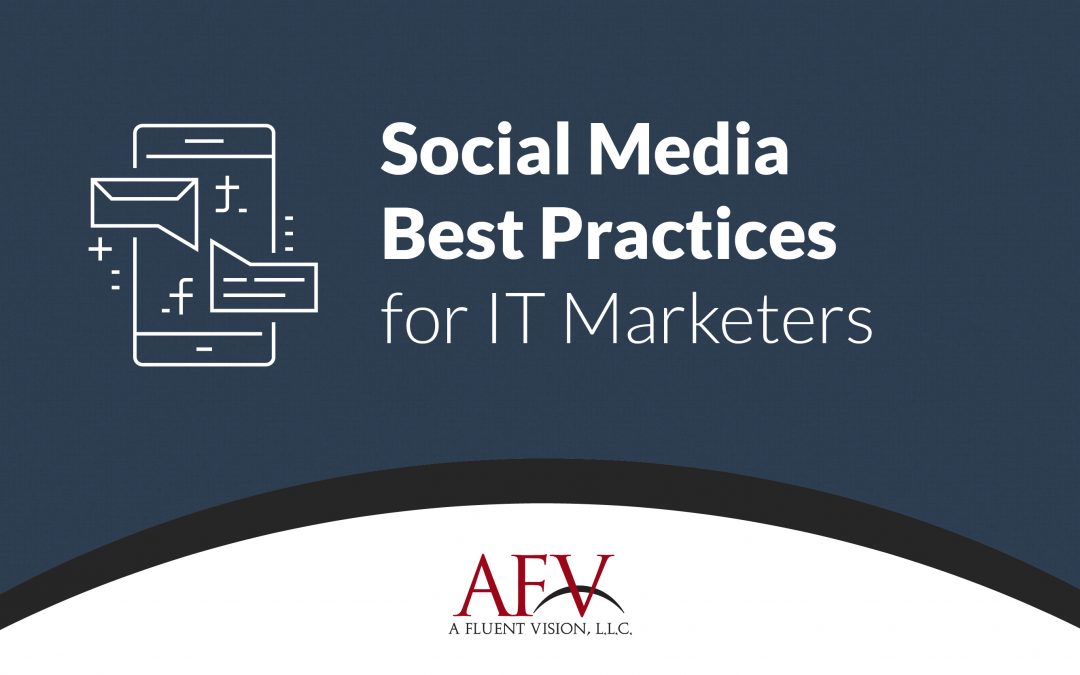Social media is more than just a millennial trend, it’s shaping the way industries interact with customers and is changing the way consumers intake information. Because there is a vast landscape of content in an unpredictable environment, it can be easy to find yourself falling behind in a shifting virtual dynamic. For this reason, we have put together some best practices to guide and help you improve your social strategy.
Monitor key influencers
Keeping track of industry trends and monitoring key influencers within the IT space can really help gauge what you should publish. Look for what others are interested in, what patterns are emerging, which content gaps exist, and how your business can contribute. Studying influencers is an easy way to gauge the types of people you should speak with, and what content will get them to engage.
Develop your CTA
When it comes to the promotion of content, posts that include a strong call to action drive more traffic from your audience. Being a thought leader in the IT industry requires more than posting general information or product campaigns, but directing people to videos, links, infographics, as well as other custom resources that will provide the viewer a greater value. You’ll want to position yourself as a go-to for all information and resources IT, which promotes brand awareness, thought leadership, and increased engagement.
Put your money where your mouth is
Adding money to the mix of the online world is a game changer for many businesses. Large social media networks such as LinkedIn, Twitter, YouTube, and Facebook have been notorious for rolling out algorithm changes without warning, leaving the organic reach of many accounts to be lacking. Strategically planning ahead and deciding where to place your funding (for instance, into a campaign that could drive traffic to you or your partner’s solutions), is a worthwhile investment.
If you’re not sure where to spend MDF, social media ads are a great option!
#Hashtags
Hashtags are best used on Twitter (but are gaining traction on LinkedIn), and should be strategically placed so their presence doesn’t become #overkill. When utilized correctly, they can serve as a great form of exposure and make your brand more discoverable. They can, however, be rendered useless if they’re too general – for example, if you’re posting about security, make sure it is specific to what you are talking about- so instead of #security, try #cybersecurity.
For those of you who are attending or hosting events, hashtags are also a great way to bridge the gap to post-event follow-up!
Set measurable goals and quantify success metrics
Although this may sound like a rather obvious step, many organizations fail to determine exactly who they are targeting and why. Are you trying to drive overall engagement? Promoting a campaign landing page? Are you developing awareness for a specific solution? Identify your purpose for using social media and define what success would look like – this helps shape the overarching message and formulate stronger engagement.
Are you ready to take on social media?
Social media is a great way to meet net new prospects and stay engaged with existing customers. A strong social presence enables your sales reps to start more conversations by simply engaging with company posts.
Need help managing your social media marketing? We’ve got you covered. Find out about our Virtual Social Media Management and other on-demand marketing services.

